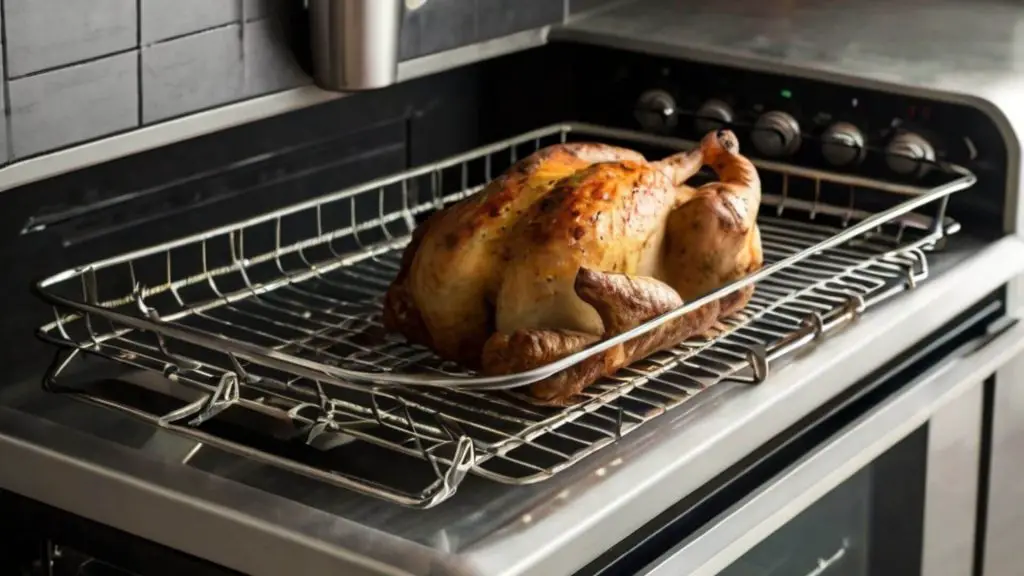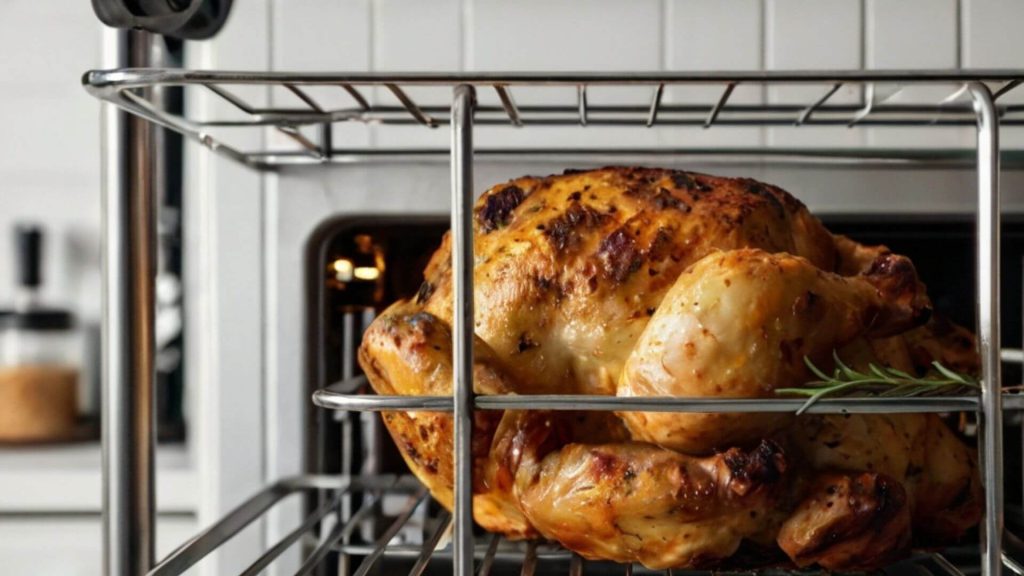As an Amazon Associate I earn from qualifying purchases.
Baking enthusiasts and home cooks often question the limitations of their kitchen appliances. Particularly when making big meals or heavy meals. One common query with important dangers is ” How Much Weight Can an Oven Rack Hold?”
Although the answer may differ according to the oven’s maker and the model. It is this post is designed to give a general guideline to ensure safety and stop kitchen accidents.

Oven racks are designed so that they can withstand heat generated. By cooking, while also helping to support pots, pans, and even dishes.
They’re usually made of nickel-plated, heavy-duty steel wire that is both strong and long-lasting durability. Manufacturers create oven racks with a particular load-bearing capacity. Usually thinking of standard cooking tasks, from roasting chicken and baking casseroles or cakes.
Average Weight Capacities:

Although most ovens have an instruction manual for users that could indicate the weight limits for their racks. It’s common for the information to not be included.
In general, an oven rack will hold 40-60 tons (18 to 27 kgs). But, this is an estimate that is conservative and some premium as well as commercial oven racks will be able to hold greater weight.
Factors Affecting Oven Rack Weight Capacity:

Material: The strength of the material from which the oven rack is constructed is a significant factor in its weight capacity. For instance, stainless steel typically has a greater tolerance to weight.
Design and manner in which you construct the rack as well as the method. By the way wires are placed and welded, may affect the strength of the rack.
Support: The way that racks are supported in the oven – whether they’re placed on molded ledges, or rest on stands or hooks can affect their ability to support weight.
Maintenance: The time-long exposure to high temperatures as well as the wear and tear resulting from the usage can alter the strength of oven racks.
Safety Tips for Using Oven Racks: Equal Distribution of Weight Always make sure to evenly distribute. The weight over the rack, to avoid it from stretching or moving.
Avoid overloading: Don’t over-load the oven rack. when a dish seems heavy. It’s best to take a stab of cautiousness as well grant more assistance or choose an extra sturdy surface.
Regular Inspection: Check the oven racks frequently for signs or distortion, wear or damage. Replace the racks in case any signs of deformation or joints become loose.
If they are available, follow the specifications of the manufacturer regarding weight capacity and use.
Make use of many racks: When you’re cooking diverse weighty items, spread the weight between multiple racks instead of putting all the weight on a single rack.
Conclusion:
Although the typical oven rack found in a typical oven can support a considerable quantity of mass. You need to read your oven’s user’s manual for the most up-to-date details. The quality of the oven racks is equally important.
By evenly distributing the weight and not overloading the racks and regularly assessing. Your oven’s condition will be able to warrant that they stand up to the challenges they’re subjected to.
Be aware of the capabilities and limitations of your kitchen appliances is crucial to the safety and efficiency of your cooking ventures.
Amazon and the Amazon logo are trademarks of Amazon.com, Inc, or its affiliates.
Leave a Reply